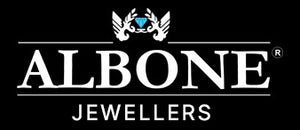Common mistakes people make when buying diamonds
When you're buying diamonds, it's easy to let your emotions take over, but not letting your heart rule over your head can mean you don't make mistakes you may later regret. Here are some of the most common mishaps to avoid when diamond shopping.
Impulse shopping
It's easy to set your heart on the first diamond you look at, but try to take a more practical approach before you let yourself fall head over heels. Many people are swayed by looks alone when diamond shopping, but it pays to find out exactly what you're buying, and to take your time over the decision. Become acquainted with a diamond's 4Cs (cut, colour, clarity and carat) first off, and compare like for like to get an idea of your options.
Not asking to see a grading report
A diamond's grading report is documentation that details its characteristics, as determined by a professional institute. It might not seem such a significant detail to view this report, but actually it's your best form of proof to clarify that what you're buying is genuine and worth its price tag. This report will also stipulate whether the diamond has been treated in any way, which won't necessarily be visible to the naked eye. If a diamond has been treated, this could impact on the stability of the stone and its value. To make matters more complicated, not all grading reports are accurate or genuine, so it's imperative to choose a jeweller with a sterling reputation who'll be happy to go through the intricacies of the report with you.
Focusing on colour
Even if you've heard of the 4Cs, you could be forgiven for thinking that when it comes to diamond shopping, it's the colour of the stone that demands the highest consideration, as this is perhaps the easiest to define. In actual fact, it's the cut of the diamond that plays the biggest role in determining its sparkle, and the cut is said to influence the value of a diamond by up to 50%. A diamond that is cut very deeply may carry much of its carat weight in the depth of the stone rather than the width, making it a poorer cut but less expensive to buy. As a rule of thumb, the better the cut of diamond, the greater its brilliance.
Looking for a bargain
Of course, getting value for money is important when buying any item of jewellery, but don't put too much emphasis on scouring for a bargain. The more you focus on finding a cut-price deal, the greater you run the risk of buying something that is of poor quality or may not be what you think it is. By all means shop around, but bear in mind that diamonds aren't subject to price wars like baked beans. Diamonds are bespoke purchases and there doesn't tend to be much variation between prices of the same quality item.
Not thinking about lighting
Shop lighting can make a diamond appear different from how it would look in other types of lighting scenarios, influencing its brilliance and sparkle. Many people don't recognise this when diamond purchasing, so ask if you can look at the diamond in more natural light, such as near a window or in direct sunlight, before you choose which diamond appeals to you most.
Ignoring practical aspects
If you're buying diamond jewellery that you intend to wear on a daily basis, it's important to base your decision on practicality as much as beauty. Naturally, aesthetic appeal will be high on your agenda, but never ignore how practical the jewellery will be to wear, such as if you regularly participate in active pursuits, or if the nature of your job could compromise the jewellery in some way. Pay special attention to the settings and metal, for example, so that you choose diamonds that are less likely to get knocked or damaged, and can comfortably be worn all day long.
Believing everything you're told
Because you can't easily spot if a diamond is a fake or not, or what its individual characteristics are, this makes them vulnerable to being mis-sold. Although in most cases, this probably won't happen to you, it's still vital to have your wits about you when diamond shopping. When you are told facts or figures about a diamond, ask to see documentation that clarifies this. Be wary of succumbing to sales tactics, and don't feel pressurised into buying anything. For impartial and reliable advice about diamonds, it's preferable to shop at a store that you trust or comes with recommendations.
Choosing the wrong place to buy
Many people are swayed by price when deciding where to buy diamonds, but this isn't advisable, unless you have considered a number of other factors, too. Whilst price is important for any purchase you make, when buying diamonds, you should also consider the reputation and reliability of the store, the service you receive and what level of after service you can expect. If you decide to buy off the internet, you should do lots of additional research to make sure you feel confident that your decision is the right one. It's also worth choosing an online retailer that actually owns a physical shop.
Biased feedback
In this day and age, reading reviews and feedback is a useful way to get an opinion about products or services from people who have already bought them. When buying diamonds, looking at feedback is important when deciding which store to choose, but try to get a balanced approach. If you look at a retailer's website and read customer testimonials on its site, how can you be truly sure they aren't biased? Would a retailer post negative views anyway? Probably not! In order to get a more accurate view of products and services, have a look at independent review websites or online trading stores where diamonds are sold, as the feedback given here is likely to be impartial and more balanced.

